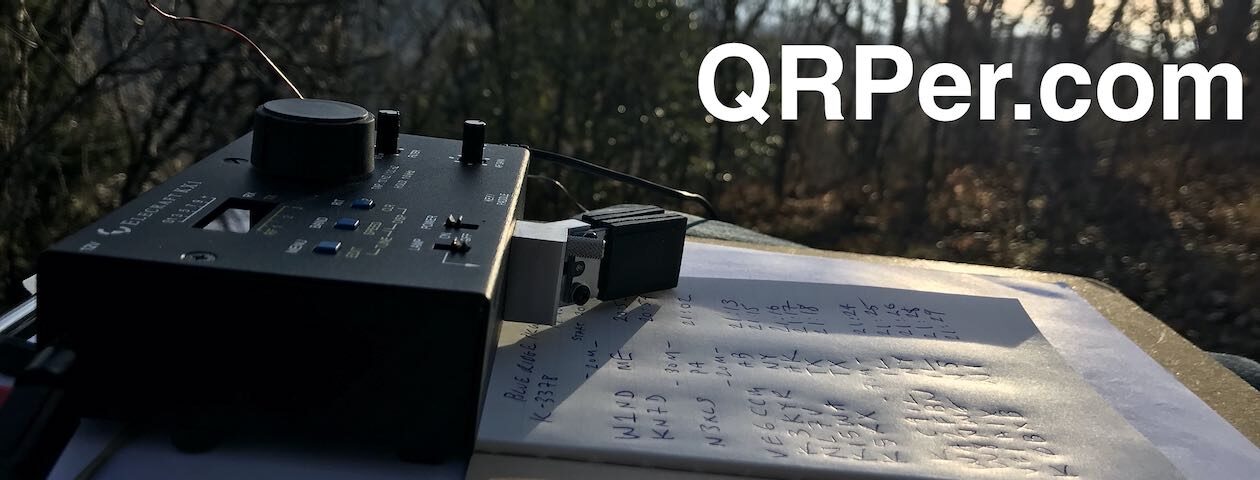Many thanks to John (NS6X) who shares the following field report:
Frustrating rove from California QTH to OzarkCon in Branson, MO.
by John (NS6X)
I had great plans for a radio-centric, POTA activation road trip from my home in Camarillo, CA (outside Los Angeles) to my first visit to OzarkCon in Branson, MO. The Four State QRP Club hosts the two-day conference. I recently became a kitter (I put together one of the kits) for the club, assembling the parts and shipping the Cricket20 (see kits a 4SQRP.com).
 I had the parks planned out along I-40 where I would stop, overnight stops for my little trailer, and my traveling companion Sachiko (Agnes), my Tortie cat.
I had the parks planned out along I-40 where I would stop, overnight stops for my little trailer, and my traveling companion Sachiko (Agnes), my Tortie cat.
Long story, but my wife of 48 years died three years ago from ovarian cancer, so I now enjoy traveling alone. I am calling my trip story, “Traveling with Agnes,” a shout out to John Steinbeck and Traveling With Charley. I seldom plan ahead, so to have night stops, parks planned, and such was something for me.
I packed my Elecraft KX2, KH1, FT-891, Penntek TR-35L, and my 22-year-old KX1. I have multiple Bioenno batteries for power, that I packed in an official QRPer.com/HRWB bag and placed next to the door.
I should have stepped out of the door and put it in my truck or trailer, as I left the batteries at home. I did have a Bioenno solar “generator”, but it doesn’t have power pole output connectors, and I haven’t made power pole-adapted cables for it. And of course, I left my power pole crimpers and connectors at home, too. I didn’t discover this until I stopped at my first POTA park, the US-1058, Homolovi Ruins State Park in Arizona, just outside of Winslow.
My KX2 had a partially charged battery, so after futzing about with the power sources, I set up my KX2 and AX1 antenna. I was able to make 7 QSOs in a little less than an hour, even after spotting myself, but did not have the time to stay longer to complete the activation. My campsite was at a KOA in Albuquerque; it was raining/snowing/hailing, and my next stop at the Petrified Forest was out, too. I was discouraged, so packed up and took off.
I had watched Thomas’, K4SWL’s videos and read about the KH1 being used as a radio for an activation, but after my limited number of contacts in Arizona, I wasn’t too positive about it. However, coming from a suburban lot in a housing tract, the lack of QRN/M noise in the Arizona desert was amazing. I didn’t think that I had turned on the radio, seriously.
 So, driving through New Mexico, and part of Texas, into Oklahoma for the evening, stopping at a Harvest Host location for the night, I decided I would listen to the bands, using the KH1. I heard a few signals. My stop was only a few miles from the Washita County Wildlife Management Area, US-8661, so I decided to take the KH1 and mosey over to the POTA site.
So, driving through New Mexico, and part of Texas, into Oklahoma for the evening, stopping at a Harvest Host location for the night, I decided I would listen to the bands, using the KH1. I heard a few signals. My stop was only a few miles from the Washita County Wildlife Management Area, US-8661, so I decided to take the KH1 and mosey over to the POTA site.
I told myself why not, spotted myself on 20 meters at 14.058.2, called CQ and was I surprised. LOUD signals came back. Many stations were calling me. I completed my activation with 12 QSOs in 16 minutes, using the KH1, putting out 4.6 watts. The SWR was about 1.1:1. I was impressed with the stations from Wisconsin, Pennsylvania, Florida, Texas, Missouri, and North Carolina that called me. Did I say they were LOUD? And no noise.
I just finished the activation – forgot to take photos. I was a photojournalism major (although my career was as a firefighter and paramedic). How could I keep forgetting to take photos?
My takeaway and lesson learned was to pack ahead of time, with a checklist (I am never that organized), and that the KH1 is a real radio, able to do things like be used for a POTA activation.
It didn’t hurt that I had a zero noise level, and that there were QRO stations calling me, as well as the spotting system that makes POTA and other similar activities workable, and fun.
After becoming first licensed in 1966 at 11 years old, I am once again excited about ham radio. The social aspect of ham radio is a real positive. The fun of POTA and SOTA is invigorating my radio life. I am back contesting, and putting up a better antenna at my house: the CC&Rs are no longer valid as they haven’t been enforced for more than 35 years, no HOA, and the city issued a permit to me.
I will be back at another Oklahoma park in the morning. I am writing this in the early evening after getting back to my trailer. My KH1 battery is charged, ready to go, if anyone else is ready at 8 AM.
Off to Joplin, MO tomorrow, then Branson, MO for the conference on Thursday, beginning Friday morning. The conference is over Sunday. I did make a reservation for Sunday night in Branson to hang over and watch the eclipse as the sun passes over Branson on Monday.
72’s, NS6X, John Kitchens







































































































